Unusual variety of Gogoshary pepper and the rules for its cultivation
The tomato-shaped Gogoshary pepper conquered gardeners with an unusual type of fruit, excellent taste and unpretentious care. Breeders presented several varieties of this group, differing in shape and taste. Even novice summer residents who do not have practical experience and skills can grow such peppers on their own plot.
Gogoshar pepper was developed by Moldovan breeders. Initially, only one variety was presented, but later the research institutes developed a whole group of plants with similar characteristics. The variety bearing the same name differs from its counterparts in that its fruit resembles a pumpkin in shape. The cultivation of this type of peppers does not cause any difficulties even for inexperienced summer residents.
This variety also has a second, more common name - Ratunda.
What's interesting?
Gogoshara peppers contain more vitamin C than lemons and black currants. The plant is capricious about the temperature regime: it cannot stand a temperature drop below + 16 ° C. The ripening period is average. The first crop is harvested 110 days after germination.
The harvested crop is suitable not only for long distance transportation, but also for long-term storage. At the same time, the fruits do not lose their taste and market characteristics, and the supply of vitamins and nutrients is preserved as if the peppers had just been plucked from the garden. They are very meaty, tasty, juicy, with thick walls. Such advantages bribe gardeners - every year more and more summer residents plant Gogoshary on their plots and make every effort to ensure comfortable growth conditions.
Description of the variety
Variety information Moldavian breeding Pollination type Self-pollinated View Stamp Type of ovary formation Single Ripening rate Mid-season, it takes about 110 days from germination to harvest Cultivation area Open and closed ground. Cultivated in the southern regions and the middle lane Stocking density (planting pattern) 5 bushes per square meter / 40x70 cm Yield 5 kg per square meter Fruit type The fruits are large, sweet, similar in shape to a pumpkin. The aroma is strong, classic. At the stage of technical ripeness, the color is dark green, then turns into yellow-orange or red. The taste is honey, with a barely noticeable bitterness. Purpose of fruits Universal Resistant to adverse conditions Afraid of cold snaps, lowering the temperature below + 16 ° C is considered unacceptable. Cannot tolerate lack of light. Drought intolerant. Disease resistance Resistant to fusarium, rot, viral mosaic. It is affected by pests. The Gogoshary pepper bush is a down-to-earth standard type up to 0.5 m high and 0.45 m wide. The leaves are pointed at the ends, their shape is round, the color is dark green.
Gogoshara fruits are round in shape, like a small pumpkin, slightly flattened. The mass of each of them ranges from 50 to 150 g. 4 seed chambers are visible in the section. The walls are 7 mm thick. Depending on the varietal characteristics, the color of the peppers can be green, red or yellow.
Also, breeders have bred rare varieties with unusual colors:
- Violet;
- the black;
- burgundy.
The peppers have a powerful stalk, so they are directed upwards, which makes the bush very decorative. The pulp is dense, fleshy, with excellent taste and marketability.The crop is suitable both for fresh consumption and for all types of processing.
Pros and cons of the variety
Gogoshary pepper has significant advantages that distinguish it favorably from competitors:
- high yield rates;
- fruits are thick-walled, fleshy;
- the harvest is well preserved;
- peppers are suitable for long distance transportation;
- fruits are low in calories;
- peppers contain many vitamins, in particular of group B, as well as PP, C, trace elements necessary for the human body;
- fruits are able to ripen after being removed from the bush.
At the same time, Gogoshary has some disadvantages:
- the plant does not tolerate drought;
- lowering and sudden changes in temperature can destroy pepper;
- stems are very fragile, break easily;
- exposed to some pests and diseases, requires timely preventive treatments;
- you cannot plant Gogoshary next to other varieties of peppers, since it is easily pollinated, and the harvest in that case no longer corresponds to the varietal characteristics.
Given the significant advantages of the variety, gardeners agree to put up with these disadvantages and try to create the most comfortable conditions for growing Ratunda.
Growing features
The Gogoshary pepper is a little capricious in cultivation, but if simple rules are followed, even a novice gardener can cope with this task.
Before sowing, the seeds are soaked for 30 minutes in a weak solution of potassium permanganate. After that, they are sown on seedlings at a distance of 5 cm from each other and left alone until shoots appear. It is impossible during this period to move containers or turn them - the seedlings are given complete rest.
The seed can be sown in ready-made soil mixture purchased from the store, or you can mix the necessary components yourself. This will require:
- 2 parts of peat;
- 2 parts of sod land;
- 1 part humus.
After the emergence of seedlings, containers with seedlings are isolated in a well-appointed room with a temperature of at least + 24 ° C. Otherwise plant growth and development will stop, and if the indicator drops below + 16 ° С, then the peppers may die. Gogoshary can be grown both in the greenhouse and in the open field. Due to the fact that they are undersized and the bush is compact, planting is often done under film shelters and in greenhouses.
An important condition for growing Gogoshar is the choice of a planting site. No other varieties of this plant should grow nearby - neither bitter nor sweet varieties. This species is easily re-pollinated, because if you plant it next to other peppers, you will not be able to harvest the crop with the declared varietal characteristics. The site should be well lit, but at the same time protected from drafts and gusts of wind. Gogoshary cannot be planted in the beds where potatoes or tomatoes were previously grown.
The best predecessors for such varieties would be:
- beet;
- cucumbers;
- carrot;
- onion.
Pepper of this variety prefers light loamy soil with a high content of humus for cultivation. In addition, the soil must retain moisture well, but not allow it to stagnate.
Care features
The varieties, united under the name Gogoshary, are considered capricious, with certain requirements for care.
First of all, they need regular and timely watering, since peppers do not tolerate drought. With a lack of moisture, the plant immediately sheds leaves and ovary. Water the peppers in the aisles to increase humidity with warm, settled water.
The soil in the beds where the pepper is grown is recommended mulch... The layer of mulch should be about 3 cm. Use straw or cut and dried grass for this purpose. During the growing season, the plant needs to remove side shoots in order to the bush formed correctly and did not waste energy on useless growth.
After each watering or heavy rainfall, the soil in the bed with Gogoshary should be loosened, and the emerging weeds should be immediately removed. Otherwise, it can lead to the appearance of pathogenic bacteria and the development of diseases.
This variety requires application of fertilizers to the soil during the entire growing season.
It is worth remembering that each type of feeding has its own time:
- Before flowering, fertilize with preparations containing nitrogen.
- During the period of active flowering, a complex fertilizer is applied.
- With the appearance of ovaries, they are fed with a preparation containing phosphorus.
When using any drug or fertilizer, you should strictly follow the instructions and recommended rates, otherwise you can not only not wait for the harvest, but also destroy the plant.
Gogoshara pepper bushes are recommended tie up and be sure to install supports. The fruits are fleshy and heavy, and the branches are very fragile, therefore they can easily break under the weight of the harvest.
Reviews of gardeners
Gogoshary peppers have been known to gardeners for a long time, therefore many of them managed to experience all their advantages and disadvantages on their own experience.
From the reviews it follows that most summer residents are completely satisfied with the plant. They happily close their eyes to minor flaws. However, many novice agrarians faced problems in growing this variety and were not always able to find a decent way out of the situation.
- A resident of Krasnodar notes that it is quite difficult to grow her own seedlings from seeds without having a specially equipped room and devices for this. Plants are capricious and at the slightest temperature changes or lack of light either do not emerge at all, or lag behind in development, turn yellow and die. But the woman really likes the fruits of Gogoshara for their taste and marketability, so she decided that it would be easier to purchase ready-made seedlings and plant them in the garden at the moment when the air is already well warmed up.
- A resident of a settlement located in the middle lane, in his review, indicated that Gogoshary pepper was to the taste of his entire family. They use the crop for fresh consumption and prepare a variety of preserves for the winter. Several varieties are grown at once with different fruit colors. However, in these climatic conditions, it is impossible to cultivate Gogoshary in the open field, since the weather can be unpredictable. A man specially for his favorite variety built a small greenhouse on the site and plants seedlings there. The peppers feel great and the fruiting period is significantly extended.
- According to the reviews of the residents of the Moscow region, they also managed to get a crop of this variety at their dachas. The plants were grown exclusively in greenhouse conditions. The taste and commercial characteristics of the fruits fully corresponded to those stated in the description of the variety.
- Unfortunately, attempts to cultivate Gogoshary by residents of the northern regions and the Urals did not succeed. Even those summer residents who managed to wait for the fruits to appear in the greenhouses claim that their presentation was far from ideal, and the taste was not as good as the manufacturers described it.
Summer residents and gardeners fell in love with Gogoshary pepper not only for the unusual appearance of the fruit, but also for its excellent taste, keeping quality and meatiness. It is thanks to these qualities that you can come to terms with some of the vagaries of the plant and pay more attention to it. In addition, the fruits contain a large supply of vitamins and minerals that are so necessary for the human body. And even a beginner can cope with the cultivation of peppers, if he wishes, if he makes some effort and replenishes his knowledge base with theoretical information.
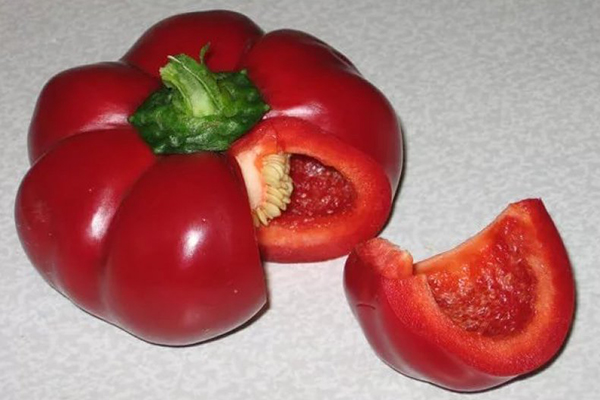
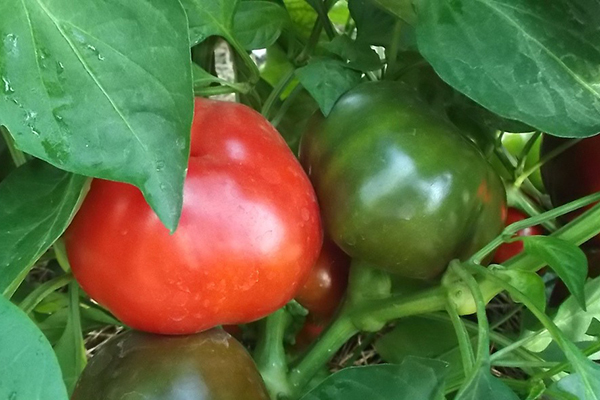
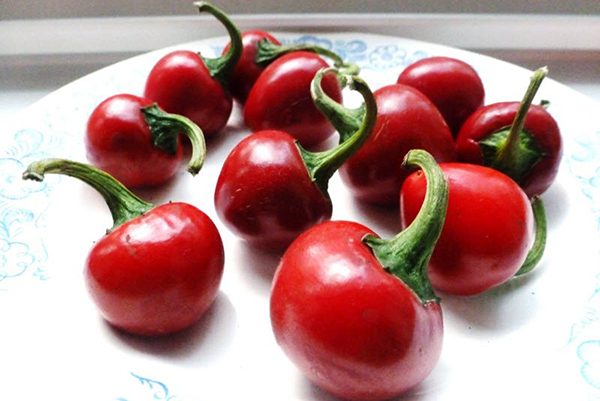
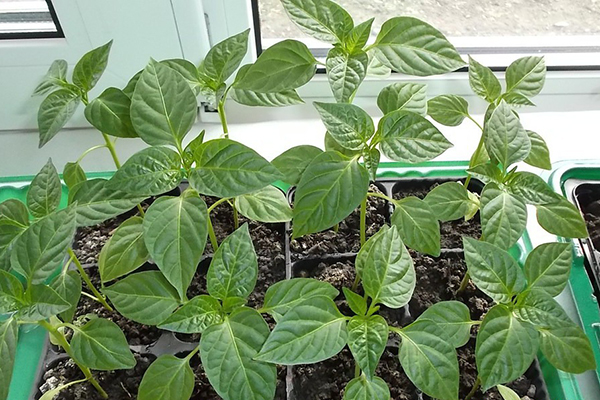
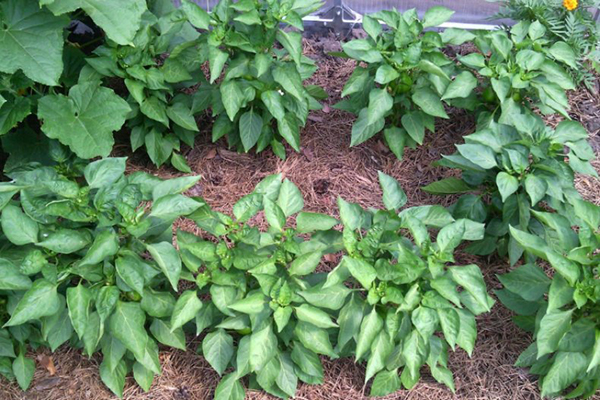
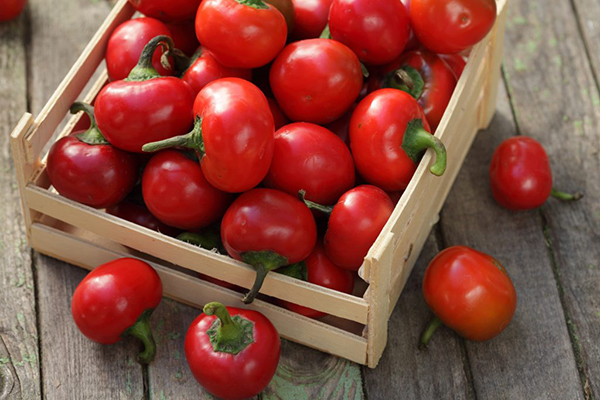


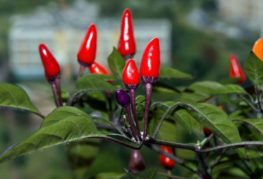
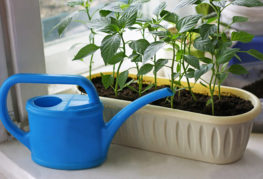
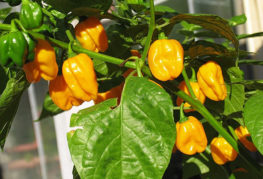
and will be published shortly.